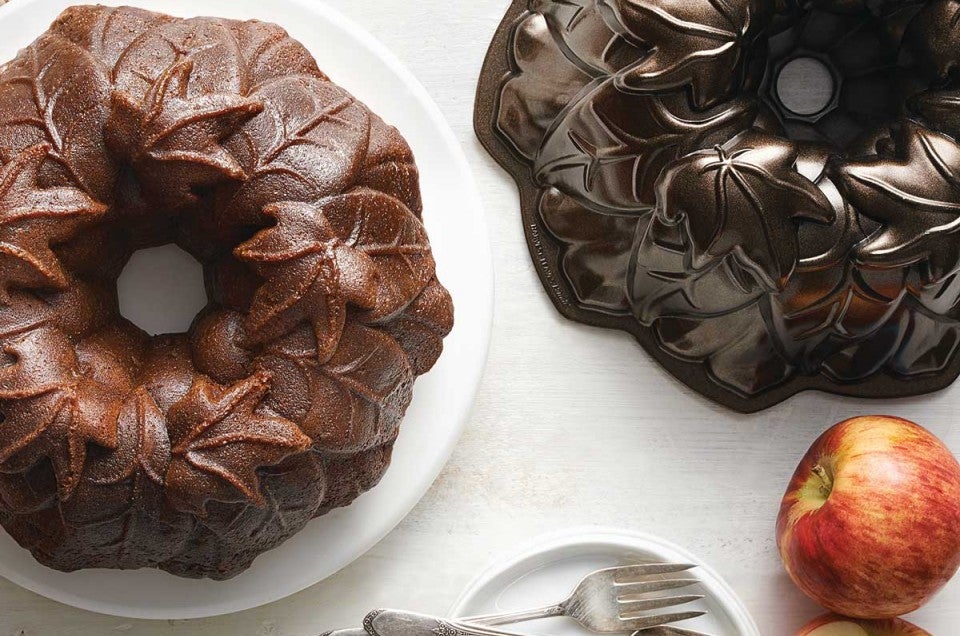


Our magazine, Sift, is filled with stunning photography and delicious recipes. But it's also a great educational resource for bakers. From time to time, we pick out a reader's question from Sift to feature here in our blog — like this one from our Holiday 2016 issue:
"I’m wondering about baking in dark pans. I made a recipe from your magazine, and it came out very dark at 350°F, even though the pan was lined with parchment. Should I lower the heat when I use dark pans?" — Corky Karen
Here's the simple answer: yes, when baking cake in a dark pan, reduce your oven temperature 25 degrees. And to be on the safe side, start checking the cake about 10 minutes before the recipe says it should be done.
A dark metal pan absorbs and distributes heat more quickly and thoroughly than lighter-colored pans. So not only does your cake bake more quickly in a dark pan, its crust can potentially burn (or at least brown unpleasantly) due to over-exposure to oven heat.
But why does that matter? Isn't it more efficient to bake cake more quickly?
No, and here's why. First, exposing the cake's sidewalls to high heat right at the outset means they'll set quickly. Meanwhile, the cake's center, still liquid, continues to rise, causing a significant dome — irritating when you're trying to stack a layer cake.
Second, it's easier for the oven's heat to penetrate cake crust while it's still soft. The last thing you want is a set crust that blocks heat from reaching the cake's unbaked interior (result: gummy center).
And finally, the quicker your cake bakes, the more chance you have of over-baking it — simply because your window of opportunity for pulling it out of the oven at the exact right moment is smaller.
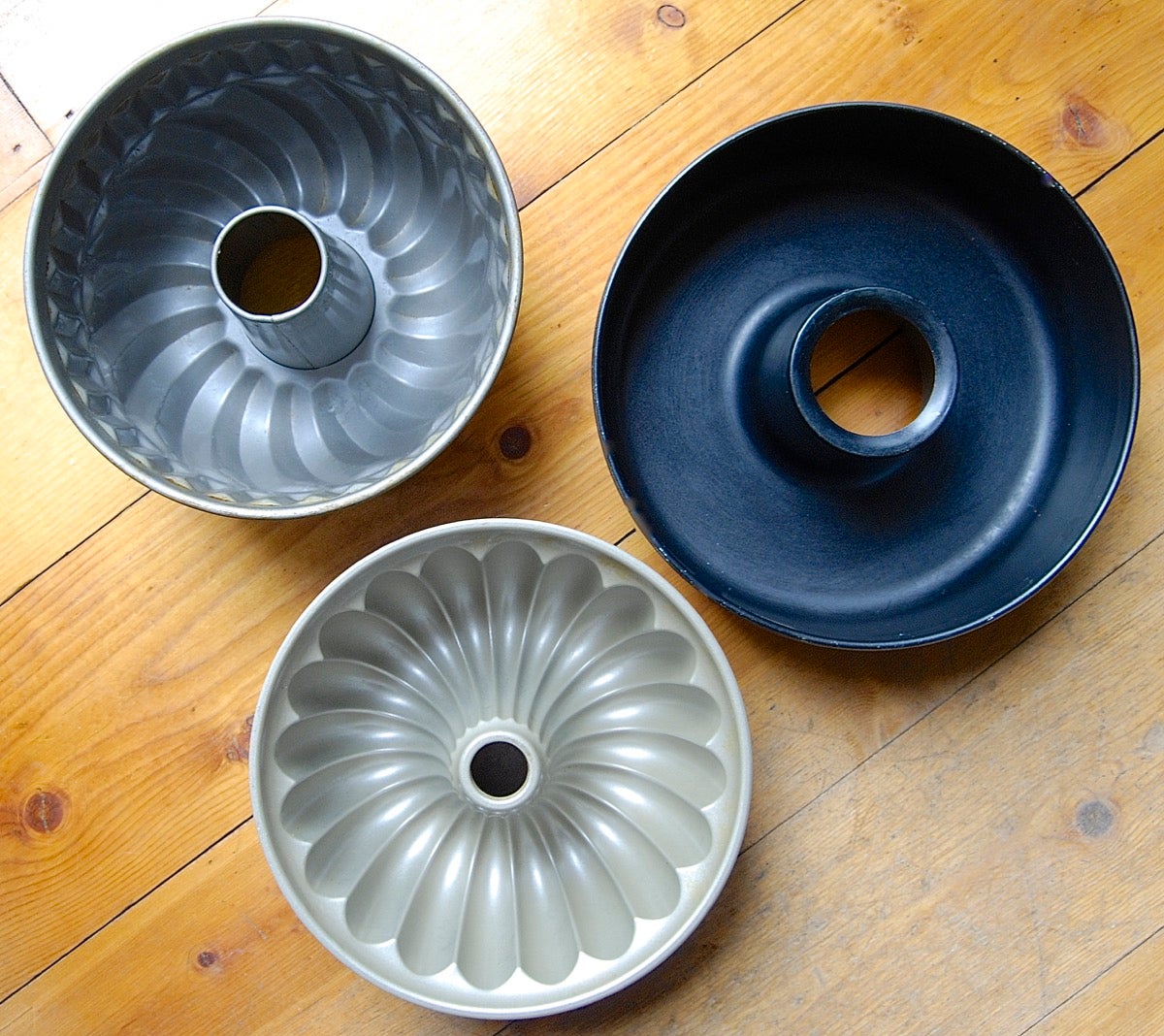
Clearly, my black tube pan in the photo above is DARK; and the Party Bundt pan at the bottom is light.
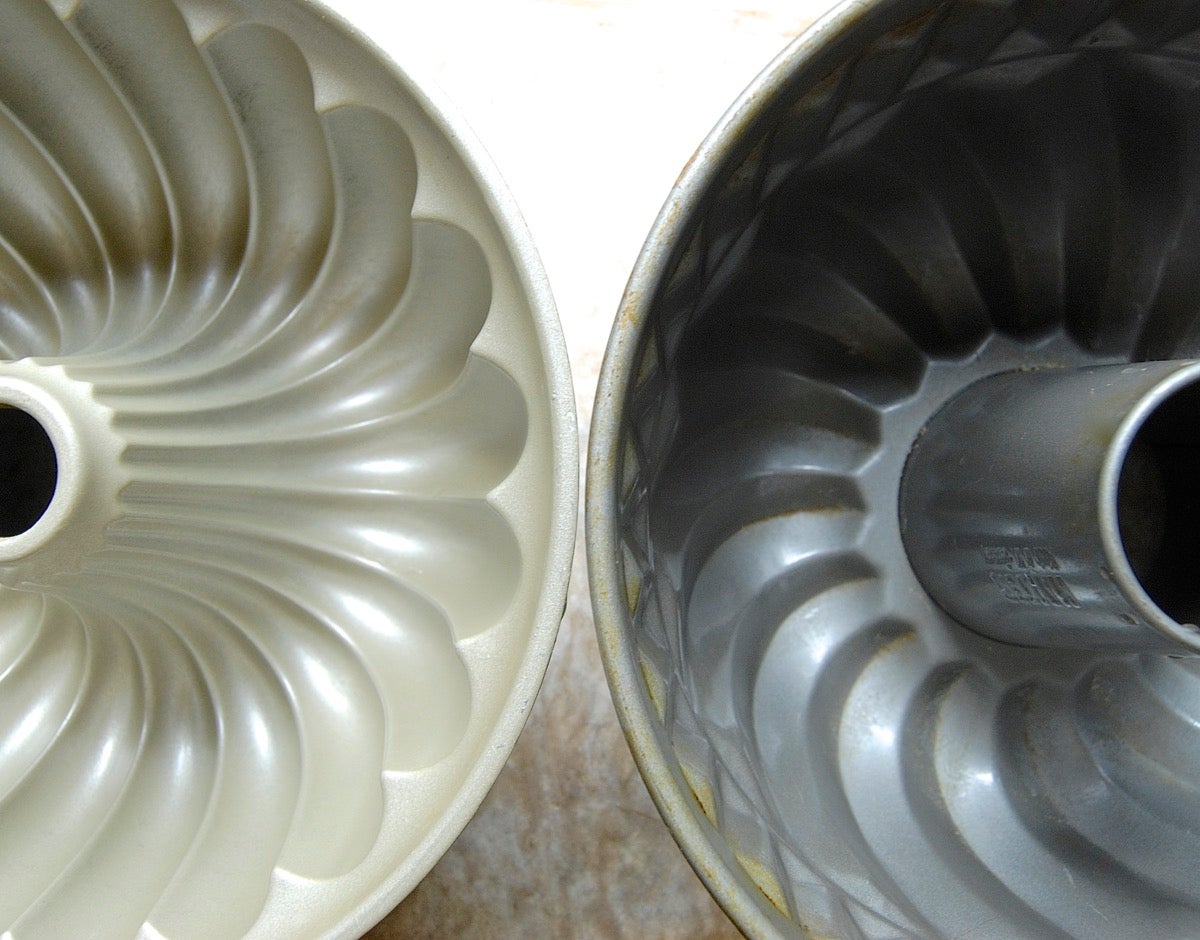
But what about my other Bundt pan, a dark gray model? Is it dark, or light?
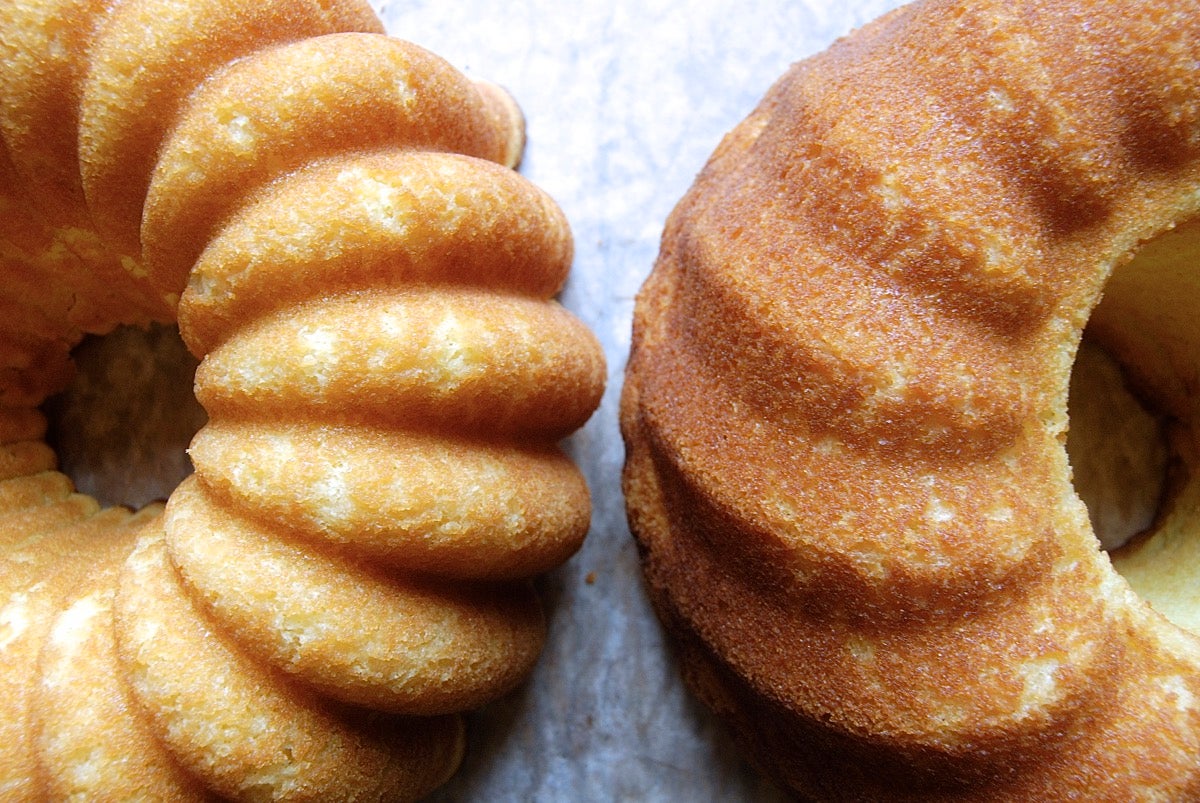
Metal cake pans can come in a range of shades, from very light gray to dark charcoal. Judging whether a cake pan is dark or light isn't as important as realizing that the darker the pan, the more quickly your cake will bake.
The photo above shows cake baked in the party Bundt (left), and in my darker Bundt. While both crusts are perfectly acceptable, the darker pan does produce a darker crust.
So, when baking in a darker pan, you might do well to start checking your cake for doneness 5 to 10 minutes before the time indicated in the recipe.
But what about lowering the oven temperature — should you do that as well?
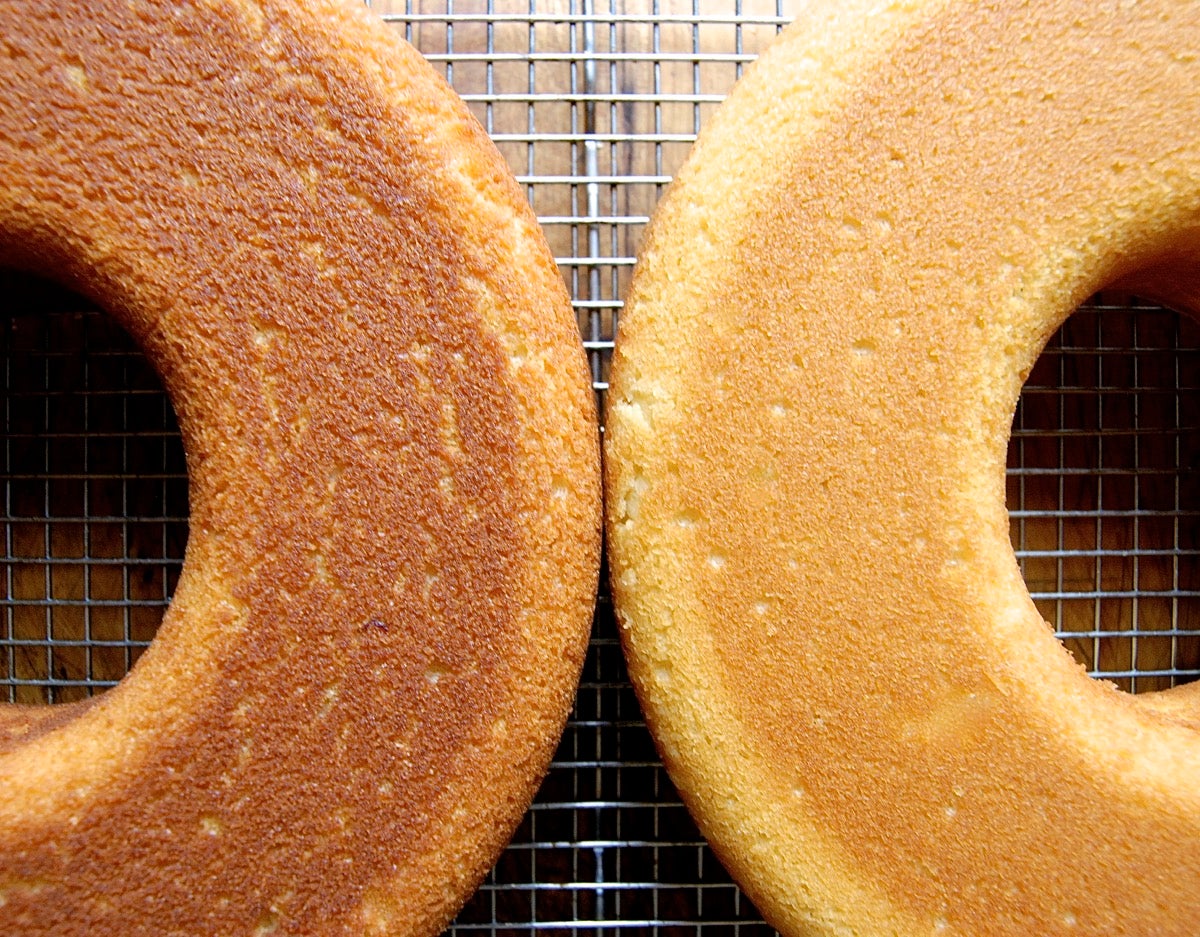
My experimenting reveals that only when you bake in a truly dark pan — black, or close to it — do you need to compensate by lowering your oven temperature.
Above are two cakes, both baked in a black tube pan for 45 minutes. The cake at the left was baked at the recipe's given oven temperature, 350°F; the one at the right, at 325°F. Baking at a lower temperature yields a lighter crust.
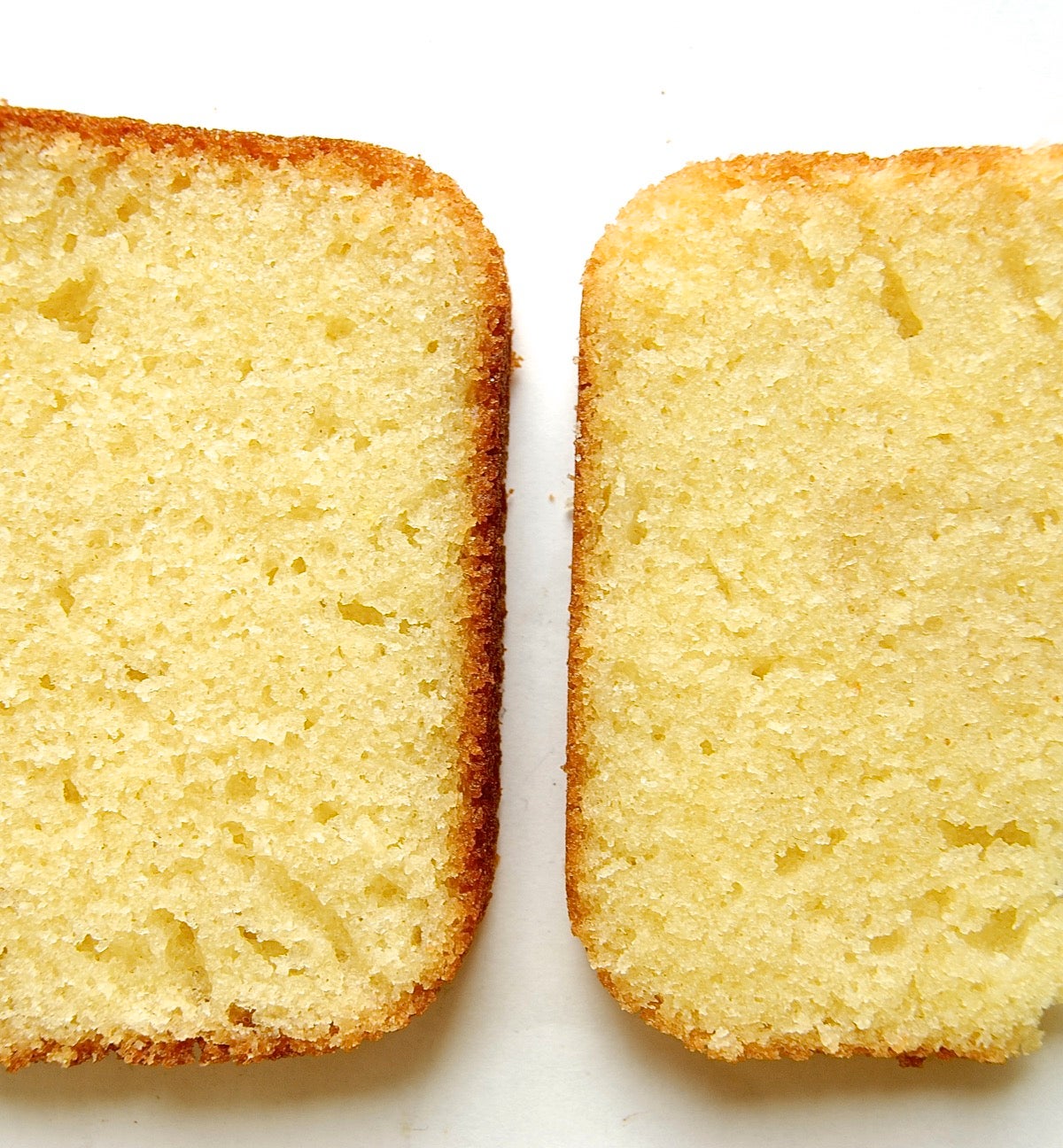
And not only is the crust lighter, it's more tender, as well. Notice the thicker, darker crust from the cake baked at 350°F (above left), compared to the crust from the cake baked at 325°F.
The darker crust is also harder — the result of sugar being drawn by heat to the cake's outer edge, then caramelizing there.
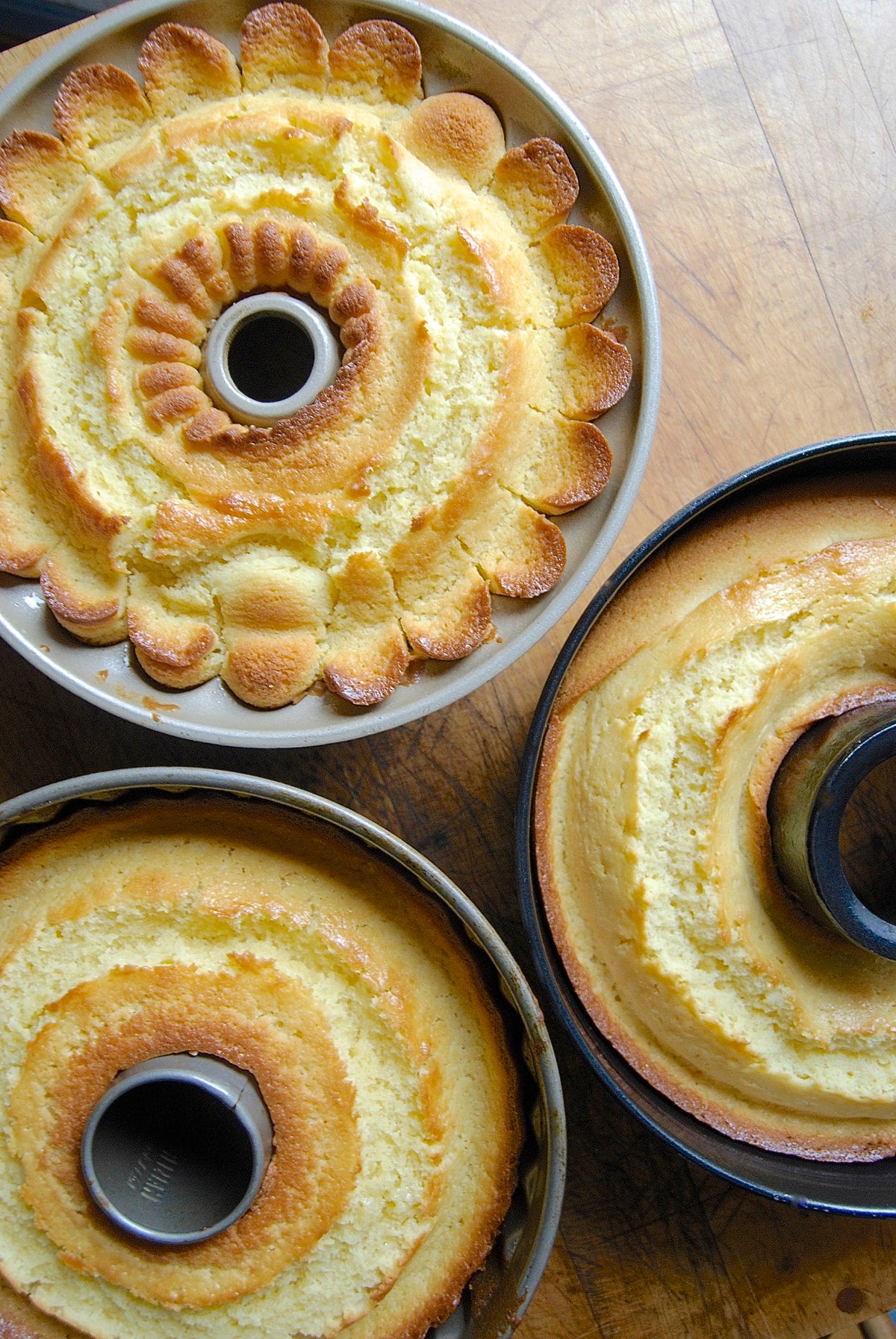
Finally, what about reducing the baking time from what's stated in the recipe?
Using our Classic Vanilla Bundt Cake recipe, which calls for a bake time of 50 to 60 minutes at 350°F, I find that cake baked in the two Bundt pans is perfectly done at 50 minutes.
Cake baked in the black tube pan, however, is done at 45 minutes — even with the oven temperature reduced to 325°F. So when baking cake in a dark pan (black or verging on black), reducing both oven temperature and baking time yields perfect results.
Since we're celebrating the Year of the Bundt, I've concentrated my tests on Bundt/tube pans, which are nearly always metal. Now, common kitchen wisdom says to lower oven heat by 25 degrees when baking in a glass pan; but without having done the tests myself, I can't vouch for that. (For more information, here's a great discussion on glass vs. metal pans).
And let's circle back to our original reader question, which mentions lining a dark pan with parchment. Parchment helps prevent sticking when you're turning cake out of a pan. But it's not an insulator; it won't block heat. So don't rely on parchment to "lighten" your metal pan.
My advice? For best results, bake cake in a medium- to light-colored metal pan. As Sift editor Susan Reid says, in her answer to the reader question that leads off this post: "If you have the option, next time reach for a lighter-colored baking pan. We think you'll be amazed at the difference."


